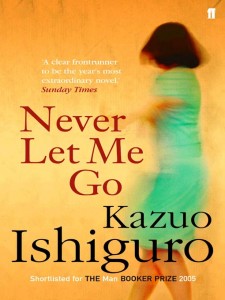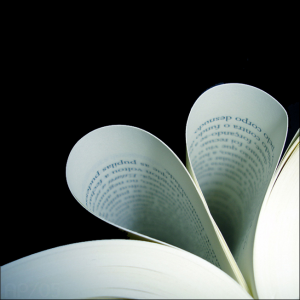From 19 to 21 April 2013, the University of Lausanne in Switzerland hosted an international conference on the subject of ‘Emotion, Affect, and Sentiment: The Language and Aesthetics of Feeling’. Agnieszka Soltysik, Andreas Langlotz, and Juliette Vuille organised the conference on behalf of the Swiss Association of University Teachers of English (SAUTE). Here, Mary Flannery and Juliette Vuille reflect on three days of intensive discussion spanning medieval and modern periods.
 At first glance, a scenic lakeshore in Switzerland might seem a somewhat arbitrary setting for a major interdisciplinary conference on the subject of emotion, but first impressions can be deceptive. Switzerland’s linguistic situation, cultural demographics, and borders with multiple countries render it a place where different languages, religions, and heritages bump up against one another. Apart from the fact that this can make things get a bit ’emotional’ from time to time, it also establishes Switzerland as a location where communicating across (and about) borders and boundaries is a necessity.
At first glance, a scenic lakeshore in Switzerland might seem a somewhat arbitrary setting for a major interdisciplinary conference on the subject of emotion, but first impressions can be deceptive. Switzerland’s linguistic situation, cultural demographics, and borders with multiple countries render it a place where different languages, religions, and heritages bump up against one another. Apart from the fact that this can make things get a bit ’emotional’ from time to time, it also establishes Switzerland as a location where communicating across (and about) borders and boundaries is a necessity.
This backdrop seemed to shape much of the discussion at this year’s SAUTE conference, which also proved that the study of ‘Emotion, Affect, and Sentiment’ is thriving in the Confédération Helvétique. As well as drawing scholars from around the world, with representatives hailing from Australian, Northern American, British, and European universities, the three-day conference attracted presentations from multiple disciplines, including medieval studies, film studies, American literature, and linguistics. From the lexis of anger in Old English and Old Norse literature to the emotional responses provoked by James Cameron’s Avatar, the subjects explored in the sessions made clear just how profoundly emotion can affect literature, art, and everyday life.
 The conference opened with a plenary by Nancy Armstrong (Duke University) on moments in contemporary novels when sympathy fails to operate. Armstrong identified these moments as part of a recent, disconcerting sea-change in which ‘unhuman’ protagonists (or ‘extremophiles’, a term she borrows from the field of biology) expose the affective limitations of so-called ‘normal’ people, and leave us as readers with a sense of lacking an appropriate response. Linking the protagonists of Kazuo Ishiguro’s 2005 novel Never Let Me Go (whose 2010 film adaptation Armstrong also discussed) with those of Mary Shelley’s Frankenstein and Franz Kafka’s Metamorphosis, she argued that such protagonists produce a ‘failure of sympathy’ among other characters.
The conference opened with a plenary by Nancy Armstrong (Duke University) on moments in contemporary novels when sympathy fails to operate. Armstrong identified these moments as part of a recent, disconcerting sea-change in which ‘unhuman’ protagonists (or ‘extremophiles’, a term she borrows from the field of biology) expose the affective limitations of so-called ‘normal’ people, and leave us as readers with a sense of lacking an appropriate response. Linking the protagonists of Kazuo Ishiguro’s 2005 novel Never Let Me Go (whose 2010 film adaptation Armstrong also discussed) with those of Mary Shelley’s Frankenstein and Franz Kafka’s Metamorphosis, she argued that such protagonists produce a ‘failure of sympathy’ among other characters.
Armstrong’s initial foray into the intricate interweaving of liminality with emotionality was aptly developed by the second plenary speaker, who brought the first day of the conference to a close. Paul Stenner, professor of social psychology at the Open University, reflected on the inherently liminal nature of affectivity. He opened with some reflections on the triple spiral carved inside Newgrange, a prehistoric monument in County Meath, Ireland. Stenner used the image as a visual aid to discussing liminality, which he showed has the potential to ‘shed light on the social nature of emotion’. Stenner paired
Brian Massumi’s conception of affect and the affective turn with Victor Turner’s theory of liminality in order to posit a distinction between affect, an unstructured, ‘pre-phatic’, and unqualified event, and emotion, a containable and knowable structuring of affect. The rest of the first day was divided into parallel sessions which further developed themes broached by the two plenary speakers. Armstrong’s brief discussion of the film adaptation of Never Let Me Go proved a fortuitous prelude to an afternoon panel on visual art, in which Agnieszka Soltysik, Lorraine Dumenil, and Nidesh Lawtoo presented on films and photography. Multiple sessions were also dedicated to the much earlier media and literature of the Middle Ages. Marcel Elias’ discussion of violence in the romance Richard Coeur de Lion, as well as James Wade‘s paper on ‘Romance, Affect, and Ethical Thinking’, strongly resonated with Armstrong’s exposition of how emotions could be used in a literary work to influence our sympathy or antipathy for protagonists (in this case, in the context of the medieval romance genre). Other papers, such as that delivered by Tamàs Karath, considered the question of when the experience and/or display of emotion is acceptable. Karath spoke about the taming of affect in late Middle English translations of Richard Rolle’s Emendatio Vitæ. Similarly, Sarah McNamer discussed the possibility of discerning radical doubt in the Second Shepherds’ Play, a provocative position considering that extreme doubt is often considered a post-medieval phenomenon.
Other emotions were at the forefront of the afternoon sessions: Daniel McCann showed how fear could be conceived as a tool to reform and purify one’s soul in the Scale of Perfection, and Mary Flannery articulated the ways in which Thomas Hoccleve played with notions of shame and shamefastness in his petitionary poem La Male Regle. Sarah Baccianti, in her discussion of anger in Old Norse and Old English (where interestingly emotions are not felt but taken as though they were acts of volition), broached the anchoring of emotions in the body. In pointing out how these protagonists are filled with anger to the point of bruising or bursting, Baccianti touched on themes of physicality and bodiliness that resurfaced throughout the conference. Baccianti, Karath, McCann, and Stenner also addressed a crucial and often overlooked aspect of feeling: its inexpressibility. Indeed, be it the apophatic affect felt toward God, or the ways in which protagonists from the Old Norse Njal’s saga cannot speak for shame or anger, the transformation of unspeakable affect to expressible emotion by way of language, song (the canor of Richard Rolle), or the body, was a central topic throughout the day.
Applicability was also a key issue raised on the first day of the conference. As literary scholars and linguists, how might we bring the tools of our various disciplines and subjects to bear on the rapidly growing field of the history of emotions? Conversely, how might the history of emotions enrich our respective fields of study? A number of papers sought to move the field of inquiry and application beyond scholarship. Arguably the most ambitious attempts to do so were the linguistics presentations. In one linguistics session, for example, two papers dealt with the intersection of emotion and language learning: Irina Dumitrescu considered how early English textbooks modelled both ‘affective repertoires’ and ‘the use of affect for intellectual purposes’, while Sarah Chevalier reported on Swiss students’ attitudes towards native and non-native speakers of English. The third paper in the session was a study by Miriam Locher and Regula König that examined the challenge that medical students face when confronting the emotions of their patients. These and other presentations made clear that our work has real-world implications and applicability.
Jonathan Culpeper (Lancaster University) launched the second day’s sessions with the third plenary of the conference: a lively introduction to his linguistic work on impoliteness in a cross-cultural perspective. Culpeper treated his listeners to a range of examples of ‘impoliteness’, ranging from backchatting bartenders to Alec Baldwin’s infamous answering machine rant to his 11-year-old daughter:
This presentation led to lively debates that spilled over into the coffee break, with both presenter and audience members pointing out the many factors that can determine emotional responses to impoliteness (as well as assessment of behaviour as impolite). Context, culture, power relations, and normative expectations—among many other things—all play a key role. The concept of the genuineness of emotions was also problematized: to what extent can one speak of ‘un-staged’ emotions in a societal context? Is it possible to separate and/or draw connections between the day-to-day performance of emotions and the staged, dramatic performance of feelings in literature and theatre?
The final plenary of the conference, delivered by Stephanie Trigg (University of Melbourne), considered the emotional reception of medieval literary works by later authors. Trigg, one of the chief investigators at the Australian Research Council’s Centre of Excellence for the History of Emotions, reflected on what the study of literature can bring to the history of emotions. Focusing on Coleridge’s characterization of Chaucer as an ‘especially delicious’ and ‘exquisitely tender’ poet, Trigg suggested that reception studies might function as an important source for the history of emotions.
Although the second day of the conference was considerably shorter than the first, its sessions were no less thought-provoking. Kristine Steenbergh‘s paper effected a rapprochement of diverse lines of thinking about emotions developed throughout the conference by exploring the history of emotion, the morality/immorality of emotions, and affect as performance. Steenbergh argued that one can discern a shift in the first half of the seventeenth century whereby greed becomes acceptable in drama due to the rise of capitalism. Greed, she ventured, became moral as a sort of counter-measure against other, more violent, emotions. In the same session, Evan LaBuzetta showed how the ‘emotion-driven print culture’ of Civil War England ‘helped shape contemporary perspectives on evil’, arguing that this phenomenon also had important implications for today’s media.
 The final round of afternoon sessions focused on topics related to poetics, religious devotion, and the sublime. Denis Renevey and Ayoush Lazikani both engaged with the ways in which devotional texts and particular devotions created affective responses in the onlooker/reader. Whereas Renevey’s paper focused on the emotions generated by devotion to the name of Jesus in medieval spiritual writing, Lazikani explored how works such as the medieval ‘Wooing Group’ aim to produce ‘co-feeling’ between their readers and the suffering figure of Christ on the cross. While drawing extensively on the published work of such historians of emotion as McNamer and Barbara Rosenwein, these papers also raised important questions concerning readership and reception which, if pursued, may revise previous interpretations of such works as ‘scripts’ intended for particular ‘emotional communities’.
The final round of afternoon sessions focused on topics related to poetics, religious devotion, and the sublime. Denis Renevey and Ayoush Lazikani both engaged with the ways in which devotional texts and particular devotions created affective responses in the onlooker/reader. Whereas Renevey’s paper focused on the emotions generated by devotion to the name of Jesus in medieval spiritual writing, Lazikani explored how works such as the medieval ‘Wooing Group’ aim to produce ‘co-feeling’ between their readers and the suffering figure of Christ on the cross. While drawing extensively on the published work of such historians of emotion as McNamer and Barbara Rosenwein, these papers also raised important questions concerning readership and reception which, if pursued, may revise previous interpretations of such works as ‘scripts’ intended for particular ‘emotional communities’.
The day after the conference was set aside as a ‘Doctoral Research Day’ organized under the auspices of CUSO (Conférence Universitaire de Suisse Occidentale). Doctoral students from all over Switzerland followed a series of workshops run by the plenary speakers, which enabled them to continue discussion developed during the conference in a more informal context. After the morning workshops, they were offered the opportunity to present their own research to Armstrong, Culpeper, and Trigg, and to receive feedback on their projects.
We have only been able to touch briefly on a selection of the papers presented in Lausanne, but one of the most persistent comments voiced by conference participants at all of the sessions was the wish for even more discussion time—conversations and debates spilled out of every session and plenary talk, and continued over coffee, drinks, and fondue. It became clear to us that, in participating in the ever-evolving field of the history of emotions, we were engaged in inherently complex work, and–one cannot stress it enough–deeply social work. Emotions history addresses itself to the core of what makes us human (or what we believe makes us human), as well as to our morals and ethics and our sense of time and place.
 Dr. Mary C. Flannery is Maître Assistante (Lecturer) in English at the University of Lausanne. She is also one of the three principal investigators associated with The Good of Literature: Ethics, Affect, and Critical Practice.
Dr. Mary C. Flannery is Maître Assistante (Lecturer) in English at the University of Lausanne. She is also one of the three principal investigators associated with The Good of Literature: Ethics, Affect, and Critical Practice.
Juliette Vuille is a final-year PhD student in Medieval English at the University of Lausanne.

